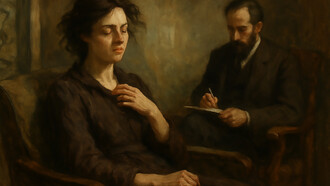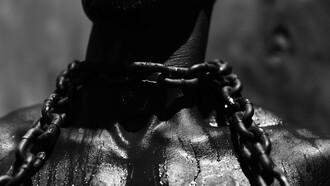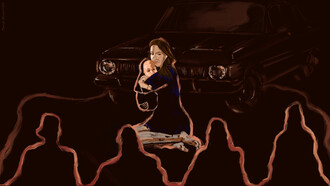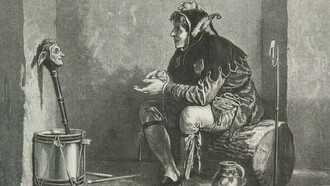The game-changing book by Ethan H. Shagan, The Birth of Modern Belief, will alter the way you understand the history and nature of belief in the West from the Middle Ages to our own time. The subtitle referring to faith and judgement indicates the structure of the argument as belief is increasingly defined in terms of the sovereign judgement of the individual. This means that belief has become a synonym for opinion or judgement against a background that distinguished philosophically between knowledge and opinion going back as far as Plato.
He distinguished between episteme as knowledge and doxa as opinion, which is further divided into eikasia or imagination and pistis as belief. Knowledge is then defined as orthos doxa, i.e. right opinion developing into religious orthodoxy where knowledge “is justified true belief”. This theme recurs throughout the book, but, curiously, there is no mention of gnosis as experiential knowledge of unity corresponding to belief, as explained by Clement of Alexandria - however, there is some discussion of scientia as secure and demonstrable knowledge though based on deduction. For Clement, gnosis is not inconsistent with pistis, but rather confirms it as lived experience, which is true of mystics throughout history such as Eckhart, Ruysbroeck and Teresa of Avila. A further important category is peitho or persuasion linked etymologically to pistis and relating to questions of evidence and argument to be revisited below.
The treatment is historical and chronological, beginning with what the author calls a crisis of epistemic authority in the Middle Ages, with people asking if they could rely on anything, and if so on what grounds. His fundamental point is that “belief is not the natural or simple category it is usually presumed to be. It is instead a constantly changing space where the nature of religious knowledge is contested and constructed”1. The starting point is mediaeval Catholicism as public participation and social discipline entailing obedience to authority, a position still maintained by Cardinal Manning in the 19th century when he argued that it is not authority that generates truth, but rather truth that generates authority. Aquinas2 defines belief as “absolutely certain assent to propositions that are given by perfect authority [the Church] rather than known according to perfect demonstration”. A curious corollary is that wrong belief is just opinion as belief is guaranteed to be true. The first phase is infused faith at baptism, which becomes acquired faith and belief as credulitas.
The next chapter moves onto the Reformation, where belief comes hard and rare: “Genuine belief in Christ must necessarily include trust that by belief alone you are saved” 3 thus reflecting salvation by faith rather than works - propositional belief is transformed into saving faith and expressed in the publication of countless catechisms embodying creedal Christianity. The counterreformation in Loyola brings belief back to obedience and acknowledgement of human limitations - people were to give assent to what the Church taught.
We come now to the invention of the unbeliever, a fascinating chapter in discussing the meaning of the term atheism, ranging from what we would understand as unbelief to debauchery and licence, which was thought to follow from this. The atheist in the second sense was one who failed to apply the ethical injunctions of faith. For Catholics, Protestants based themselves on doubt and subtraction as well as the heresy of choosing (the Greek word is derived from “to choose”). The very hardness of Reformation belief resulted in the world filling up with unbelievers well before the 18th century; the weight of belief had become unsustainable, belief became pressure to examine oneself, and nearly everyone fell short due to weakness and sin. If the problem for Protestants was the necessity of an impossible perfection, for Catholics it was the necessity of an impossible obedience4. This is highlighted in the tension between experience and authority in St Teresa of Avila and St John of the Cross. The former speaks of “knowledge of a truth that is the fulfilment of all truths”, which is surely a definition of gnosis but is not categorised as such.
The early stages of modern belief begin with Montaigne, who reacts against the intolerance and war brought about by dogmatic certitude, maintaining that no belief should be held with certainty and that everything is a matter of opinion built on intrinsically unreliable human cognition. Like Campanella, he therefore supports individual autonomy and judgement, including appeal to the senses and to testimony – a form of argument first thought to support the Gospels, but then used to undermine them as people become more sceptical of events allegedly predicted by the prophets and confirmed by miracles5. Belief becomes more aligned to the persuasion of the mind by evidence and hence probabilistic and provisional.
The chapter on enlightened belief begins with Descartes and his defence of individual judgement based on rigorous reasoning. This view is encapsulated in the 1662 book on the Port Royal Logic where belief is defined as an individual judgement reached after weighing evidence, so Christian belief becomes one particular kind of knowledge - or truth-claim. Pascal puts forward the view that the existence of God is both comprehensible and incomprehensible, hence his idea of the wager. In 1689, Locke develops his argument equating belief, assent and opinion where Christian belief is based on opinion founded on non-demonstrative evidence, an argument one still finds among the new atheists. However, an interesting implication is that scientific theories are also associated with belief rather than knowledge in this way of thinking. Scepticism as defined by Bayle becomes a novel configuration of belief based upon judgement but “untethered from old assumptions about authority and certainty”. Religious belief becomes a matter of individual judgement about religion.
The next chapter on belief in the human moves the axis of understanding towards the creations of human thought and imagination. In concluding, the author suggests using the term credulities to indicate spaces or conditions of believing and remarking that every era is credulous, but in different ways. Hence, as we have discovered anthropologically, “one culture’s knowledge is another culture’s belief” 6 and our epistemological categories determine which kinds of claims are credible, as we have also seen with the recent Galileo Commission Report where a particular naturalistic understanding of the uniformity of nature leads scientists to ignore or reject evidence for consciousness beyond the brain. In a space of sovereign judgement, “individual, propositional assent [is] based upon whatever criteria the believer finds most convincing” whether empirical, intuitive, traditional or existential. In this sense, the author argues that belief has not in fact declined but has proliferated into diverse forms, each based on sovereign individual judgement. I gained a far greater understanding of the nature and history of belief from this erudite study which I can commend to readers with an interest in this field, which, after all, affects us all in terms of our own beliefs.
1 Ethan H. Shagan, The Birth of Modern Belief: Faith and Judgment from the Middle Ages to the Enlightenment, Princeton, 2019, p. 19.
2 Ibidem, p. 47.
3 Ibidem, p. 68.
4 Ibidem, p. 146.
5 Ibidem, p. 194.
6 Ibidem, p. 283.















